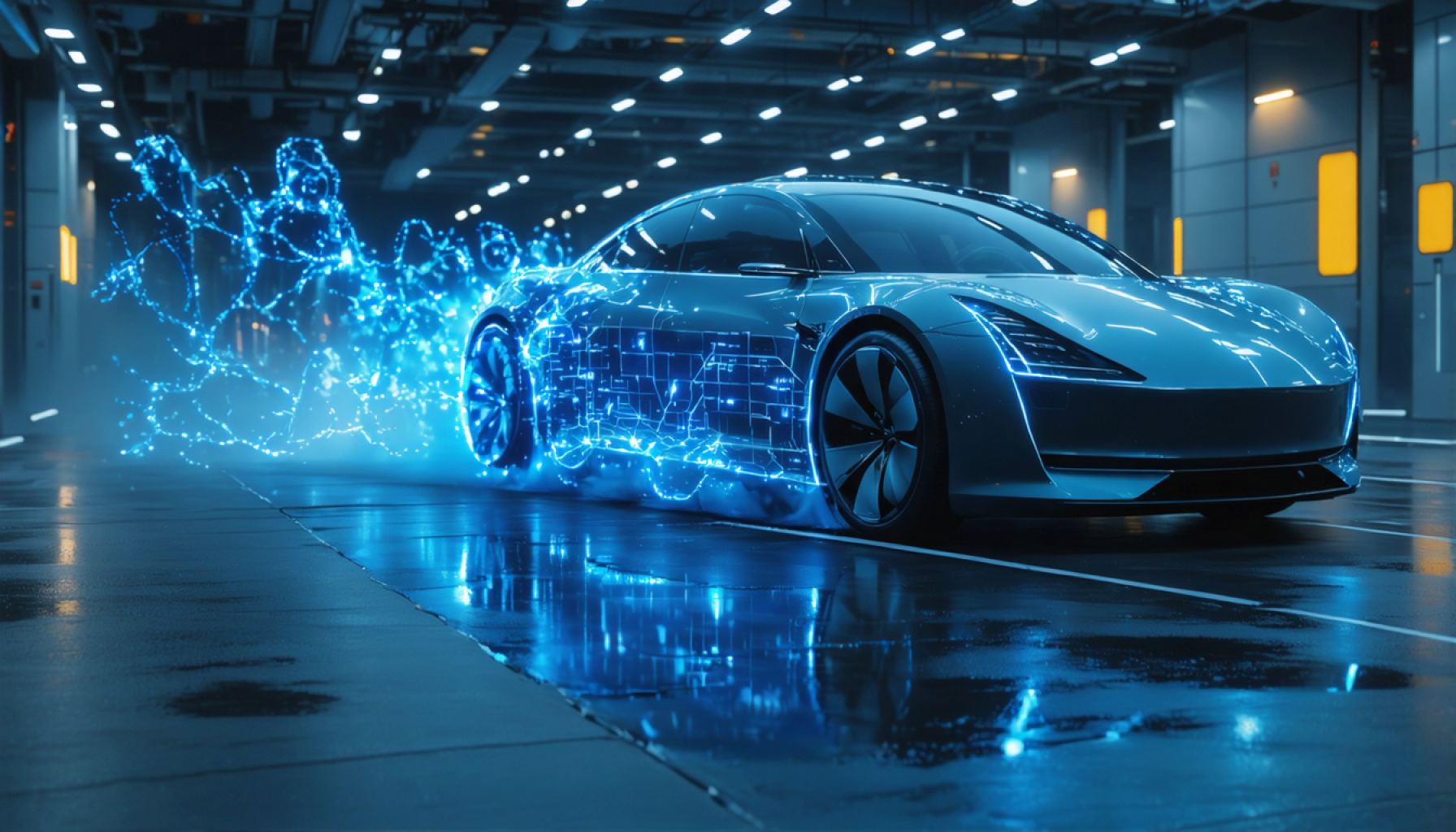- Copper nitride emerges as a transformative cathode material in fluoride-ion batteries, potentially revolutionizing energy storage for electric vehicles.
- These next-generation batteries offer twice the energy density of traditional lithium-ion batteries, extending the driving range of electric vehicles significantly.
- Copper nitride enables a reversible capacity of 550 mAh/g, more than doubling the capacity of many existing lithium-ion cathodes.
- All-solid-state fluoride-ion batteries eliminate liquid electrolytes, enhancing safety by reducing risks of leaks and fires.
- This innovation paves the way for electric vehicles to travel longer distances without frequent charging, marking a significant advancement in transportation technology.
In the bustling labs of Kyoto University, a transformative discovery emerges—a material with the tantalizing potential to reshape the landscape of energy storage. Copper nitride, a simple yet complex compound, has become the beacon of hope for next-generation fluoride-ion batteries. This novel cathode material promises not merely incremental improvement but a leap that could revolutionize the electric vehicle industry.
Picture silent electric vehicles gliding twice the distance of today’s models, no frequent stops for charging, just serene journeys stretching from urban jungles to tranquil countryside without interruption. This vision edges closer to reality, thanks to the innovation around all-solid-state fluoride-ion batteries. These batteries boast energy densities twice that of traditional lithium-ion systems, propelling the humble EV to new horizons.
Copper nitride works in harmony with fluoride ions, weaving an intricate dance of reactions within its copper-nitrogen lattice. This dance revolutionizes how energy is stored and released, offering a reversible capacity of approximately 550 mAh/g, more than doubling the capacity of many lithium-ion cathodes.
But what makes this breakthrough electrifying is not just the power but the promise of safer, more robust batteries. By eliminating liquid electrolytes, these all-solid-state batteries reduce the risk of leaks and fires—a crucial factor as we entrust more of our transportation to battery power.
This captivating development stands as a testament to the relentless pursuit of progress, an ode to innovation that could soon see electric vehicles embracing the roads with newfound freedom. For consumers and engineers alike, this signals a thrilling chapter in the ongoing narrative of technological advancement—a chapter where distance is no longer a limitation, but an invitation.
Could Copper Nitride Be the Game-Changer for the EV Industry?
Introduction
Incredible advancements in battery technology at Kyoto University are paving the way for potentially groundbreaking changes in the electric vehicle (EV) industry. Researchers have identified copper nitride as a key material in the development of next-generation fluoride-ion batteries. These batteries promise enhanced safety, substantial energy capacity, and double the energy density compared to traditional lithium-ion systems. Below, we delve into various aspects of this discovery, from practical applications to potential challenges and future trends.
How Fluoride-Ion Batteries Work
Fluoride-ion batteries (FIBs) offer several advantages over lithium-ion batteries, primarily due to the use of a solid-state electrolyte and the ability to leverage reversible chemical reactions. Copper nitride plays a critical role in aiding these reactions, enhancing the overall efficiency and capacity of the batteries. Here’s a simplified breakdown of the process:
1. Ionic Conduction: The copper nitride cathode enables the movement of fluoride ions between the anode and cathode.
2. Energy Storage: The material’s structure allows for the trapping and release of energy in a controlled manner, supporting high reversible capacities.
3. Solid-State Chemistry: By adopting a solid-state approach, these batteries minimize risks associated with liquid electrolyte leakage and improved thermal stability.
Real-World Use Cases
The implications for real-world applications are enormous. With higher energy density, EVs could have significantly increased range, reducing the need for frequent charging stations and pushing electric propulsion into longer-distance travel. Other potential uses include:
– Renewable Energy Storage: FIBs could provide a stable and efficient way to store energy harvested from renewable sources.
– Consumer Electronics: The increased safety and energy density make FIBs a powerful option for gadgets like smartphones and laptops.
Market Forecasts & Industry Trends
As the EV market continues its rapid expansion, innovations like copper nitride-driven FIBs might catalyze even faster growth rates. According to [BloombergNEF](https://about.bnef.com/), global EV sales are set to reach around 10 million by 2025. The demand for higher-efficiency batteries will only increase, pushing the market for FIBs to potentially reach substantial economic valuation.
Features, Specs & Pricing
Some key features of copper nitride fluoride-ion batteries:
– Reversible Capacity: Approximately 550 mAh/g.
– Energy Density: Expected to be twice that of lithium-ion batteries.
– Safety: Reduced risk of leakage and thermal runaway.
Pricing for these advanced batteries will depend on manufacturing economies of scale. Initially, production may be expensive, but as adoption increases, costs are expected to nominally decrease.
Controversies & Limitations
Despite their promise, copper nitride FIBs face their share of challenges:
– Material Sourcing: Copper and nitrogen are more abundant than lithium and cobalt, but scalable, efficient manufacturing processes need to be perfected.
– Lifecycle and Durability: Longevity and consistent performance under varied conditions must be convincingly demonstrated.
– Integration with Current Systems: Transitioning from lithium-ion to FIBs may require redesigning existing systems and infrastructure.
Insights & Predictions
Looking ahead, continued research and development are crucial. Collaborations between academic institutions and industrial enterprises can expedite bringing FIBs to the market. Furthermore, stricter environmental regulations may put pressure on adopting batteries with better lifecycle impacts and reduced ecological footprints.
Quick Tips and Recommendations
– For Potential Investors: Monitor developments in battery technology closely, with an eye on up-and-coming companies in the solid-state and material chemistry sectors.
– For Consumers: Stay informed about the latest EV models powered by new battery technologies, especially those emphasizing longer ranges and improved safety features.
– For Industry Stakeholders: Invest in research and partnerships that focus on scaling up production processes for emerging battery technologies like FIBs.
Discover more about emerging technologies and their impact on modern life at Bloomberg.
The rise of solid-state batteries and innovative materials like copper nitride signifies not just a technological leap but a transformation in how we perceive energy storage and sustainability in transportation.














